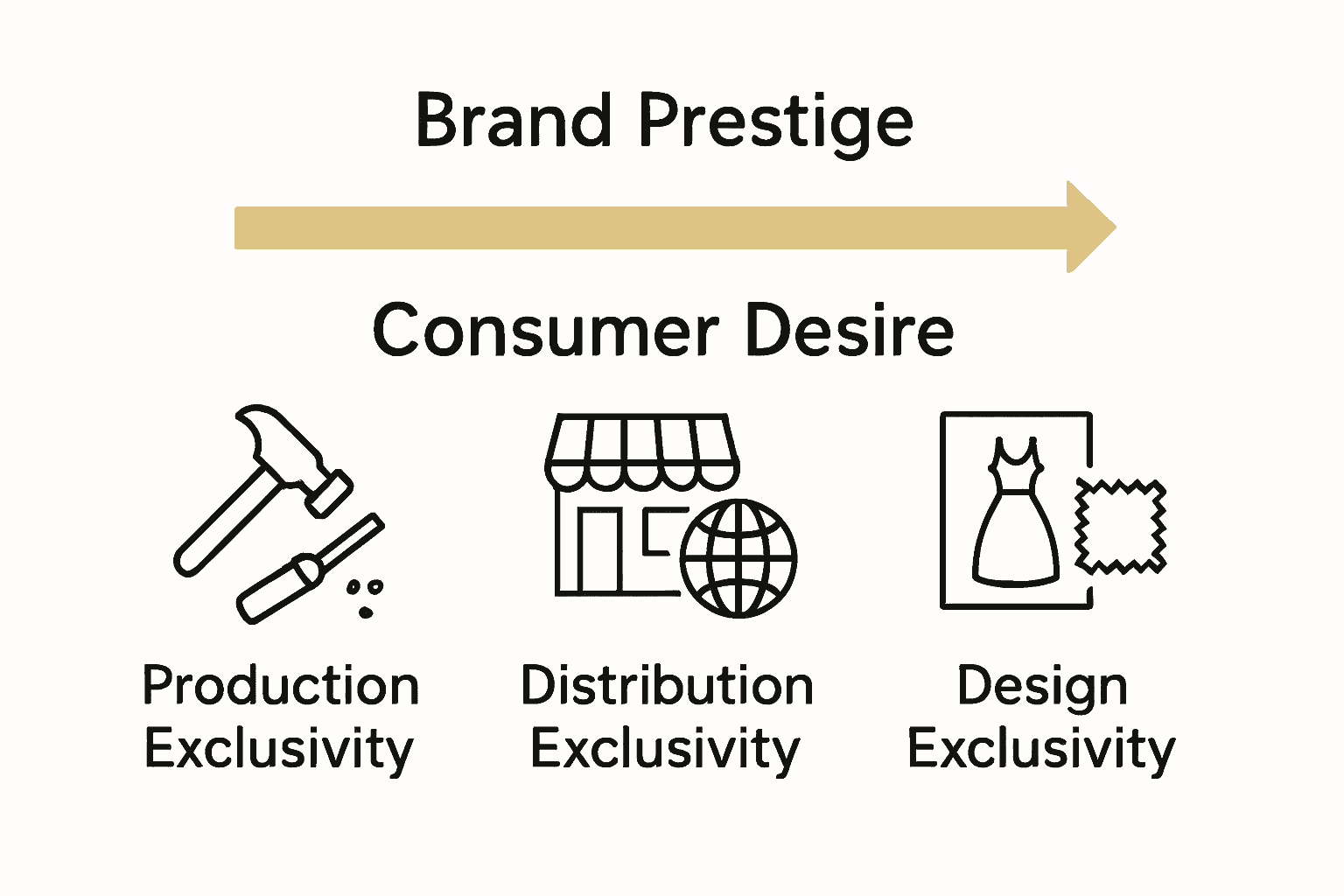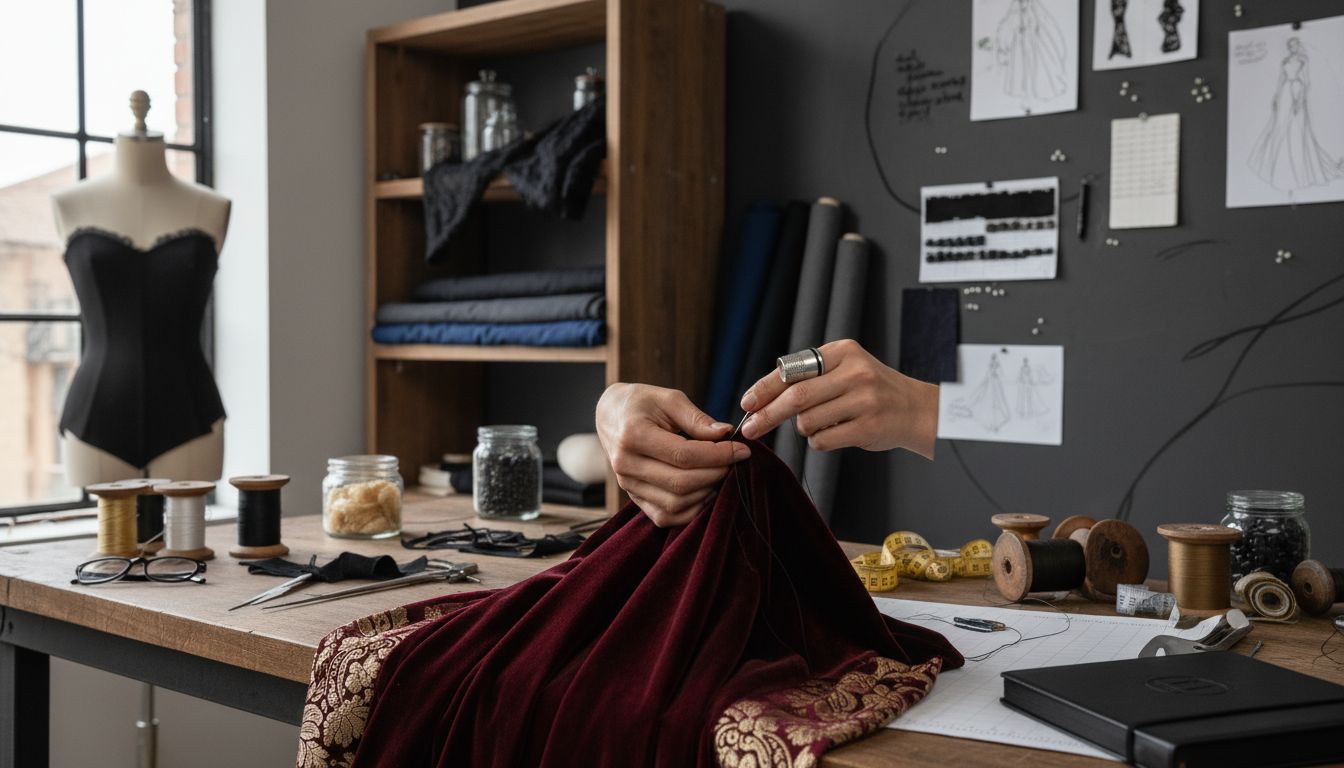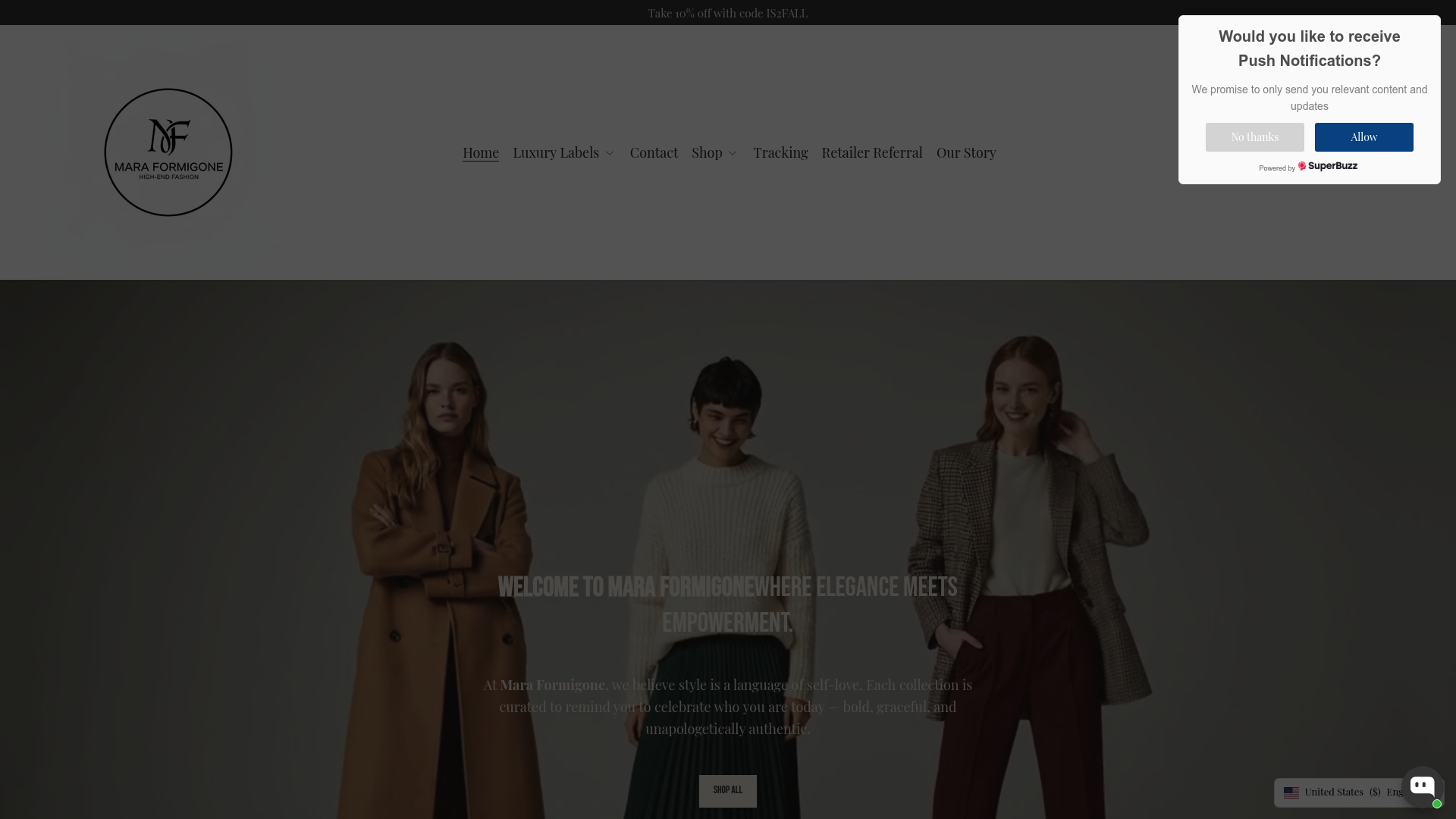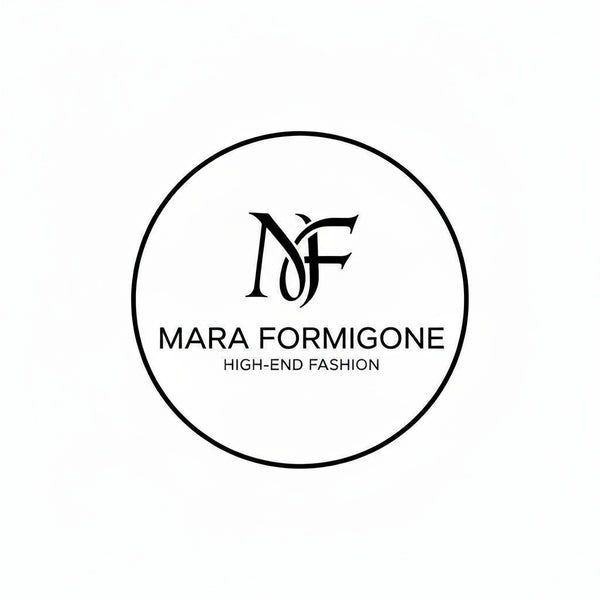Most luxury brands would vanish without exclusivity. In the world of high-end fashion, prestige is protected by scarcity and the promise of something few can claim. Research shows brands must juggle growth and elite appeal to survive. This topic matters because exclusivity shapes not only what you wear, but how you feel and the social story you tell. Discover how luxury fashion crafts desire, sets boundaries, and redefines value in a crowded market.
Table of Contents
- Defining Fashion Exclusivity In Luxury Markets
- Types Of Fashion Exclusivity And Their Differences
- How Designers And Brands Create Exclusivity
- Benefits And Appeal For Luxury Consumers
- Risks, Criticisms, And Market Impacts
Key Takeaways
| Point | Details |
|---|---|
| Luxury Fashion Exclusivity | Luxury fashion exclusivity involves a balance between expanding consumer access and maintaining brand desirability through limited production, selective distribution, and unique designs. |
| Types of Exclusivity | Key types of fashion exclusivity include production exclusivity, distribution exclusivity, and design exclusivity, each contributing to brand prestige. |
| Benefits for Consumers | Consumers gain psychological, social, and personal value from luxury fashion, including elevated self-perception and membership in exclusive communities. |
| Market Risks | The luxury fashion industry faces challenges such as perceptions of elitism, market oversaturation, and the need for sustainable practices to maintain exclusivity effectively. |
Defining Fashion Exclusivity in Luxury Markets
Luxury fashion exclusivity represents a sophisticated dance between brand prestige and strategic market positioning. According to research from rhsmith, brands must carefully navigate the complex tension between expanding their consumer base and maintaining an aura of high-end desirability.
At its core, fashion exclusivity transcends mere price point. It encompasses a multifaceted approach that includes limited production runs, unique design elements, selective distribution channels, and carefully curated brand narratives. Luxury brands strategically create scarcity and mystique through techniques like:
- Producing limited edition collections
- Implementing strict retail partnerships
- Developing invitation-only purchasing experiences
- Crafting narratives of heritage and craftsmanship
The true essence of exclusivity lies not just in restricting access, but in creating a perception of exceptional value. As rhsmith highlights, successful luxury brands balance growth with maintaining an air of exceptional distinction. This delicate equilibrium requires continuous innovation, understanding consumer psychology, and maintaining unwavering commitment to quality and brand integrity.
For those seeking to understand this nuanced world, our guide to luxury fashion for women offers deeper insights into the sophisticated realm of high-end fashion positioning.
Types of Fashion Exclusivity and Their Differences
In the realm of luxury fashion, exclusivity manifests through multiple nuanced approaches, each strategically designed to maintain brand prestige and consumer allure. While traditional notions of exclusivity centered on price and scarcity, modern luxury brands have evolved sophisticated methods of creating unique market positioning.
Three primary types of fashion exclusivity emerge as particularly influential:
- Production Exclusivity
- Extremely limited production runs
- Handcrafted or custom-made pieces
- Numbered or serialized collections
- Small batch manufacturing
- Distribution Exclusivity
- Select retail partnerships
- Boutique-only availability
- Geographic restrictions
- Invitation-only sales channels
- Design Exclusivity
- Unique design elements
- Innovative material selection
- Proprietary design techniques
- Rare fabric or craftsmanship approaches
Understanding these exclusivity models becomes crucial for discerning luxury consumers. For those interested in exploring investment potential within these exclusive markets, our fashion investment guide provides deeper insights into navigating these sophisticated purchasing strategies.

Ultimately, fashion exclusivity represents a delicate balance between accessibility and aspiration. Brands must continually innovate to maintain their unique positioning, creating experiences and products that transcend mere transactional relationships and instead forge emotional connections with their most dedicated clientele.

How Designers and Brands Create Exclusivity
Luxury fashion brands employ intricate strategies to cultivate exclusivity that transcends traditional marketing approaches. According to research from sciedu, brands must continuously renew themselves while maintaining a delicate balance between profit maximization and preserving their exclusive image.
Designers leverage multiple sophisticated techniques to create and maintain their exclusive positioning:
-
Narrative Construction
-
Developing rich brand heritage stories
-
Creating mythical brand personas
-
Emphasizing craftsmanship and tradition
-
Strategic Art Collaboration
-
Partnering with contemporary artists
-
Creating limited art-inspired collections
-
Blurring boundaries between fashion and art
As highlighted by researchgate, brands like Louis Vuitton have masterfully used art-based strategies to communicate prestige and exclusivity, addressing challenges posed by increased production and market expansion.
For fashion enthusiasts looking to understand the nuanced world of designer footwear, our guide to designer sneakers offers insights into how luxury brands create desirability through carefully curated product experiences.
Ultimately, creating exclusivity is an art form that requires continuous innovation, emotional storytelling, and a deep understanding of consumer aspirations. Successful luxury brands don’t just sell products - they sell dreams, experiences, and a sense of belonging to an elite, curated world.
Benefits and Appeal for Luxury Consumers
Luxury fashion’s profound appeal extends far beyond mere material possession, tapping into deep psychological and social dimensions of consumer desire. According to research from glion, exclusivity plays a critical role in creating brand value, with scarcity and heritage driving consumer fascination.
The key benefits for luxury consumers can be categorized into several compelling dimensions:
Psychological Benefits
- Elevated self-perception
- Sense of personal achievement
- Emotional validation
- Status signaling
Social Advantages
- Membership in exclusive communities
- Recognition among peers
- Cultural capital accumulation
- Sophisticated lifestyle representation
Personal Value Propositions
- Superior craftsmanship
- Unique design experiences
- Long-term investment potential
- Rare, collectible items
For those seeking to navigate the nuanced world of premium fashion investments, our luxury fashion shopping tips provide strategic guidance for making informed purchasing decisions.
Ultimately, luxury consumption transcends transactional exchanges. It represents a complex interplay of personal identity, social aspiration, and emotional connection - where each piece becomes a narrative of individual expression and sophisticated taste.
Risks, Criticisms, and Market Impacts
The luxury fashion industry faces complex challenges in maintaining its delicate ecosystem of exclusivity. According to research from rshare, brands must navigate the intricate paradox of preserving exclusive identity while addressing broader societal demands for diversity and inclusion.
Key risks and criticisms facing luxury fashion brands include:
Systemic Challenges
- Perception of elitism
- Limited demographic representation
- Potential cultural insensitivity
- Sustainability concerns
Market Vulnerability Factors
- Oversaturation of luxury markets
- Changing consumer expectations
- Increased scrutiny of brand practices
- Economic volatility
Emerging Sustainability Tensions Research from chandigarhphilosophers highlights the critical relationship between exclusivity and sustainable consumer behavior, revealing how brands must balance premium positioning with ethical production practices.
For consumers seeking more nuanced insights into responsible luxury consumption, our guide to affordable luxury clothing brands offers strategic perspectives on navigating these complex market dynamics.
The future of luxury fashion demands radical transparency, adaptive strategies, and a genuine commitment to addressing systemic challenges while maintaining the intrinsic allure of exclusivity.
Experience True Fashion Exclusivity with MaraFormigone
Understanding the delicate balance of exclusivity in luxury fashion means appreciating the power of rarity, craftsmanship, and iconic design. If you are inspired by concepts like limited production runs, unique design elements, and curated brand narratives, you deserve access to a carefully selected collection that brings these philosophies to life. MaraFormigone offers an exclusive selection of premium designer items ranging from dresses and shoes to accessories that echo the essence of fashion exclusivity discussed in this guide.

Unlock your own luxury experience today by exploring the finest designer pieces on MaraFormigone. Immerse yourself in a world where every item tells a story of craftsmanship and distinction. Don’t miss your chance to own a piece that stands apart from mass production and elevates your style with true exclusivity. Start your journey now by visiting our curated collection of luxury fashion and step confidently into the refined world that blends heritage with contemporary appeal.
Frequently Asked Questions
What is fashion exclusivity in luxury markets?
Fashion exclusivity in luxury markets refers to the strategic practices that luxury brands use to maintain their prestige, including limited production runs, unique designs, and selective distribution channels to create an aura of desirability and exceptional value.
How do luxury brands create a perception of exclusivity?
Luxury brands create a perception of exclusivity through techniques such as producing limited edition collections, implementing strict retail partnerships, developing invitation-only purchasing experiences, and crafting narratives that emphasize heritage and craftsmanship.
What are the different types of fashion exclusivity?
The primary types of fashion exclusivity include production exclusivity (limited production runs), distribution exclusivity (select retail partnerships), and design exclusivity (unique design elements and innovative materials), each of which contributes to a brand’s prestige.
What are the psychological benefits of luxury fashion consumption?
The psychological benefits of luxury fashion consumption include elevated self-perception, a sense of personal achievement, emotional validation, and status signaling, allowing consumers to express their identity and aspirations through their purchases.

